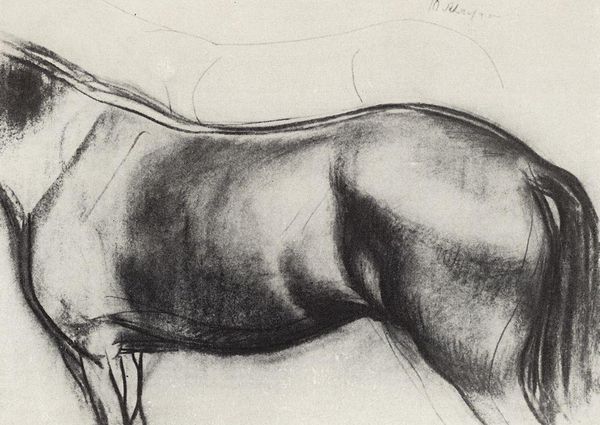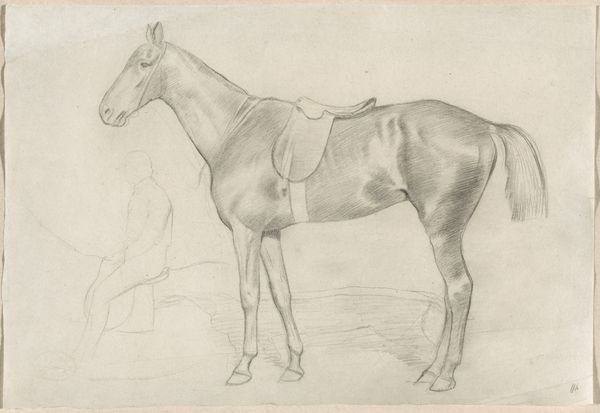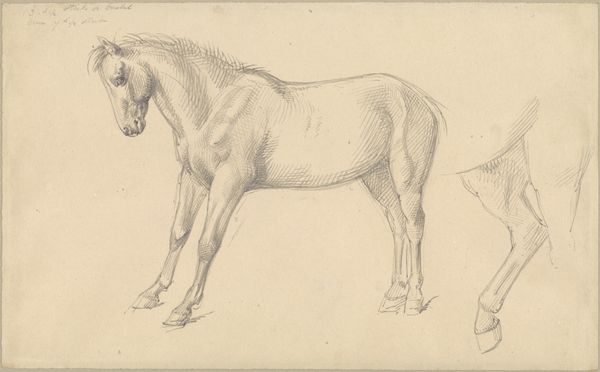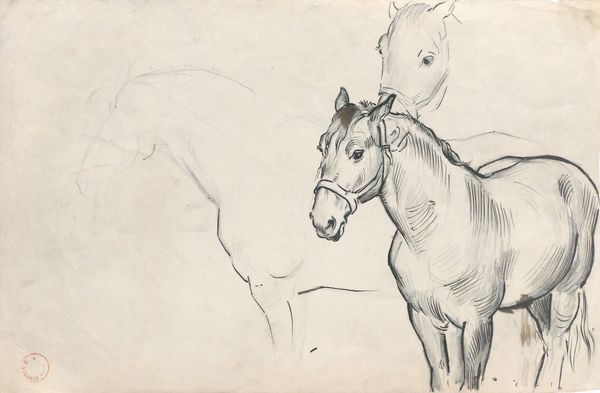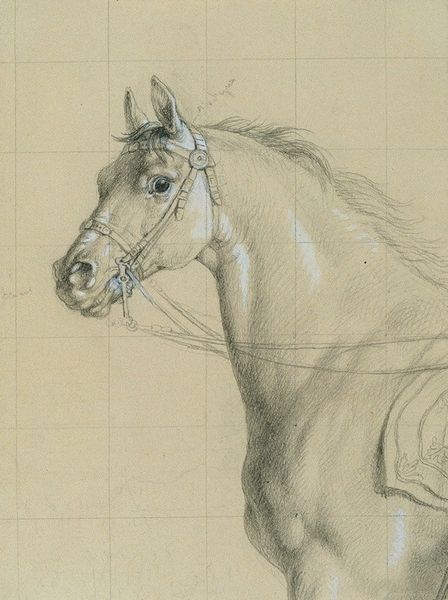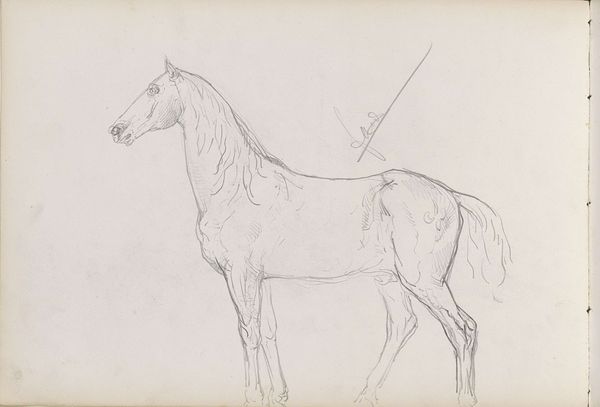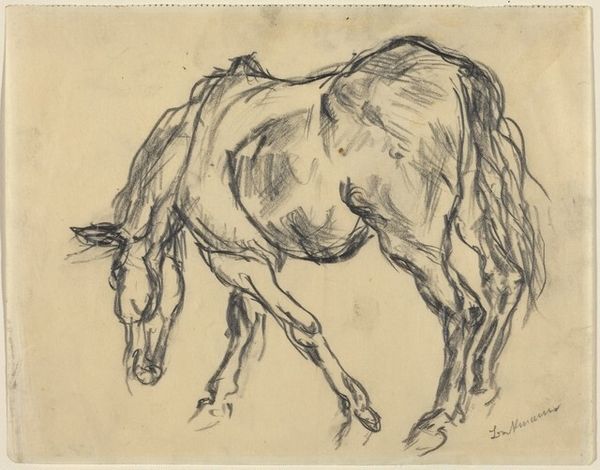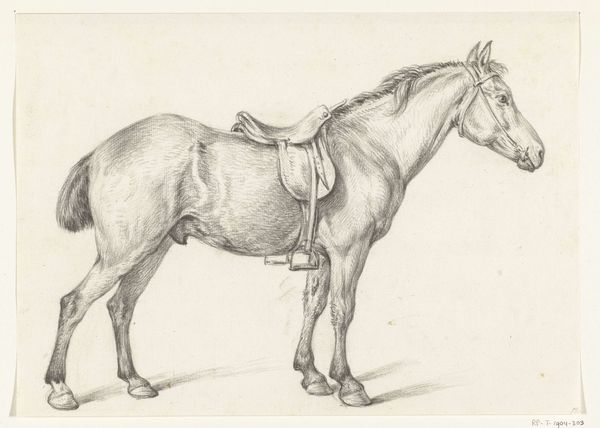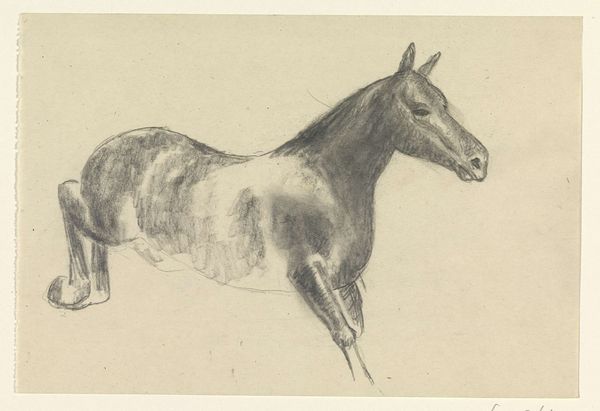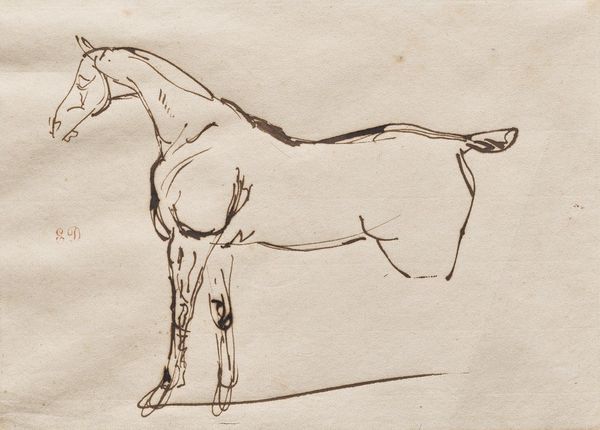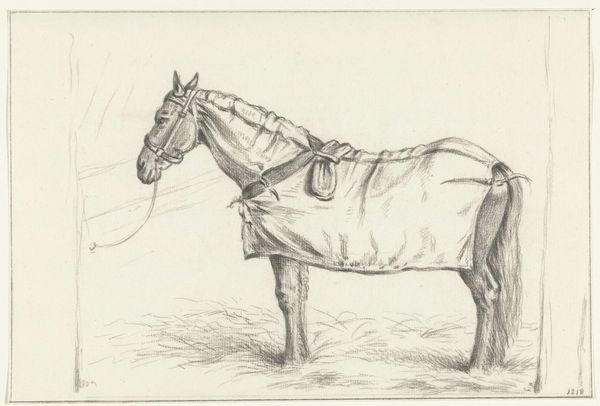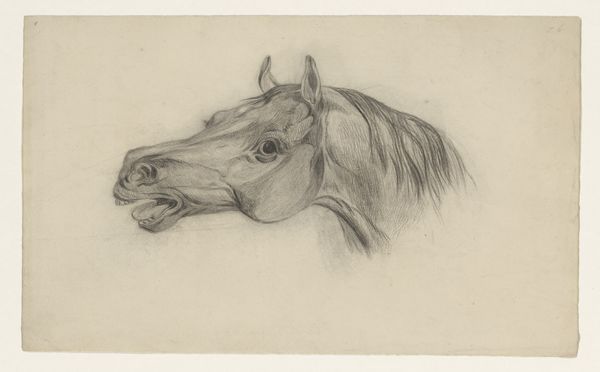
drawing, paper, pencil, graphite
#
drawing
#
light pencil work
#
pencil sketch
#
landscape
#
figuration
#
paper
#
sketch
#
pencil
#
horse
#
graphite
#
russian-avant-garde
#
pencil work
Copyright: Public domain
Curator: This drawing, rendered in graphite on paper, is titled "Sketch for the painting Bathing the Red Horse," created in 1912 by Kuzma Petrov-Vodkin. The confident lines bring out so much drama from something that is preliminary. Editor: Yes, I'm struck immediately by how dynamic it feels, even for a sketch. There's an incredible sense of weight and movement. You can almost feel the horse breathing. Look at the thickness of lines describing its torso. Curator: The application of the graphite shows clear labor in progress: there are areas that are just outlines and then concentrated areas that imply light. It also gives insights into the methods used to explore and resolve pictorial ideas. It invites us to examine the artist's choices and studio practice. Editor: Exactly, knowing the final painting became so iconic, it's fascinating to see this early stage, stripping back the layers. The sketch feels like an X-ray, revealing the underlying structure upon which the final work rests. The way that the horse is central and yet we have a glimpse of another figure is great stage-setting and offers an insightful lens. Curator: That horse became symbolic, especially in Russian art circles of the early 20th century. The piece places the heroic nude and domesticated animal centrally to propose renewal but ultimately it also promoted imperial authority with a powerful military symbol. It also showcases the intersection of art and ideology in a time of significant political change. Editor: And even just in the material, it gives you an interesting feeling—how can something so fierce and representative also be an ephemeral gesture? What does this pencilwork imply about our interaction with art history, given what's missing from it, or how it survives at all? It invites questions about access, doesn't it? The way value gets ascribed, in that it's a precursor. Curator: It's a beautiful opportunity to explore these processes and final production together. This allows the sketch to participate in how audiences value and ascribe meaning. Thank you for expanding on it. Editor: Indeed, thinking about its making certainly enriches my experience of the completed work. The politics of sketching practice can expand ways we value material creation.
Comments
No comments
Be the first to comment and join the conversation on the ultimate creative platform.
